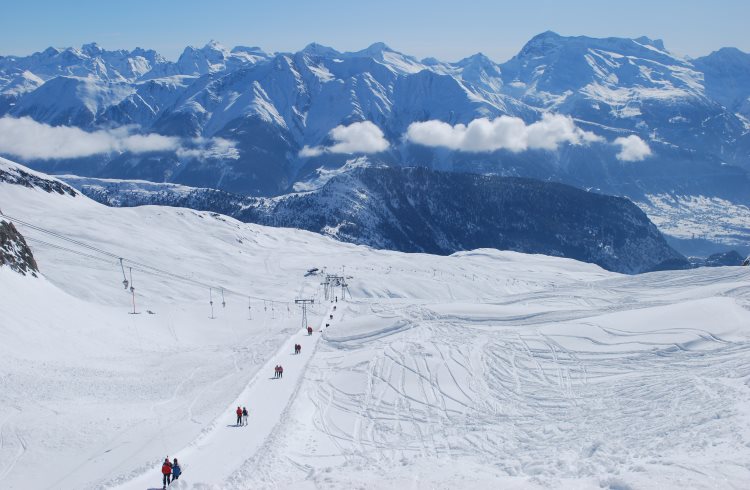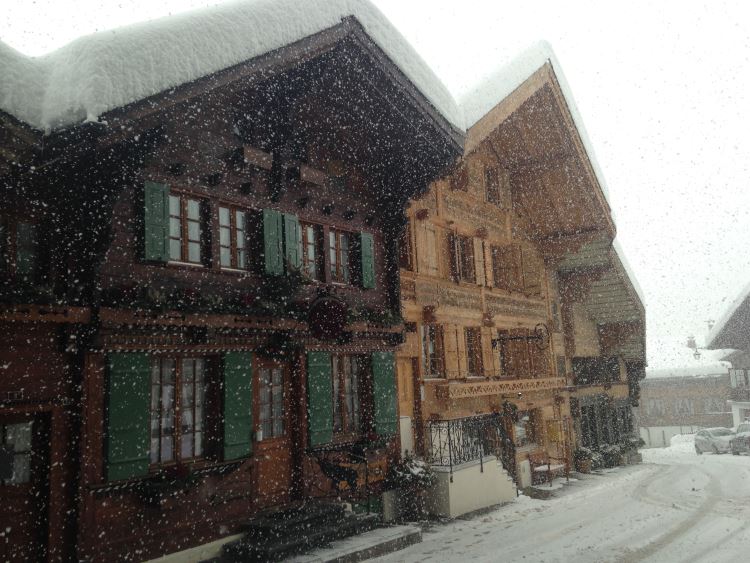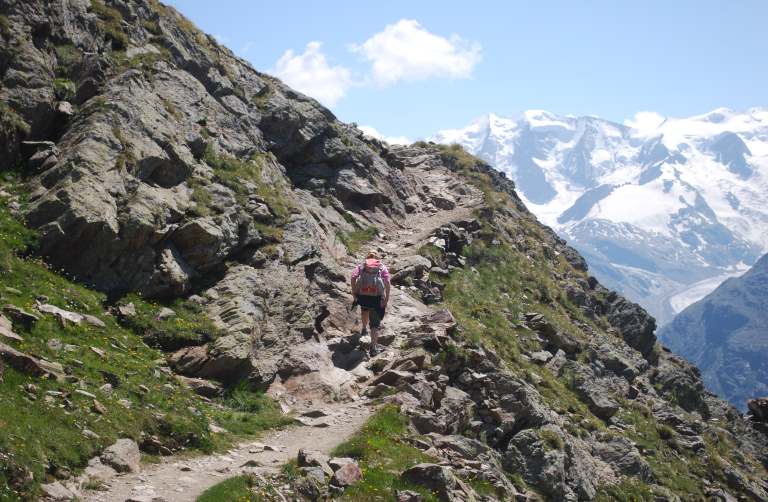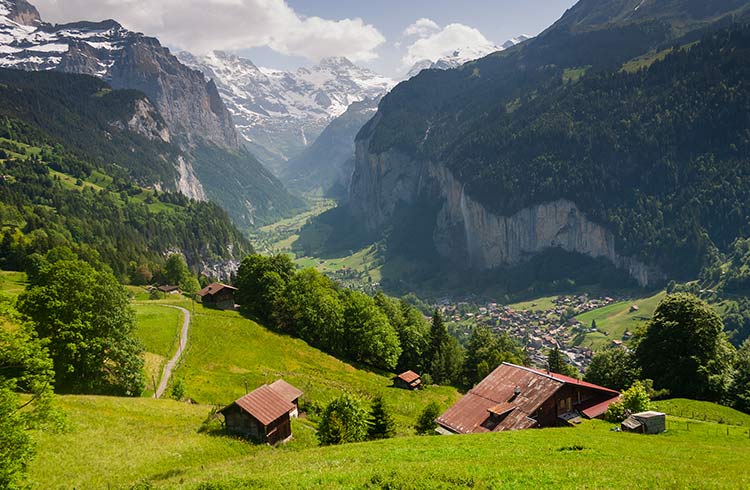Winter in Switzerland: 4 Affordable Adventures
Just outside the famous (and famously expensive) Swiss Alps ski resorts are a host of much less expensive and equally memorable things to do. Tim Neville shares his favorite winter experiences.
 Photo © Getty Images / AscentXmedia
Photo © Getty Images / AscentXmedia
Even if you’ve never been to Switzerland, chances are you know a few things about it. They make great chocolate and cheese. The Matterhorn is amazing. The place is super expensive.
That last one isn’t a cliché – one winter I was having coffee with a friend on Zurich’s hoity-toity Bahnhofstrasse when I suddenly realized I might not be able to afford my espresso. I’d only brought 10 Swiss francs, about US $11 to me, and it was barely enough to cover the bill.
Switzerland continues to be one of the world’s most expensive places to live. In Mercer’s 2024 Cost of Living City Ranking, four Swiss cities—Zurich, Geneva, Basel, and Bern—secure places in the global top 10, holding the 3rd through 6th spots among the world’s priciest destinations. But that doesn’t mean the impecunious can’t enjoy Swiss riches, too. Here are four of my favorite, cheaper alternatives to the splashier winter attractions that won’t leave you begging for your beverages.
- Budget alternative to Zermatt
- Budget alternative to Grindelwald
- Sledding and fondue
- Budget alternative to Gstaad
Budget alternative to Zermatt
After high school, I took a gap year to live with a Swiss family outside of Geneva who would go to Zermatt every year to ski. When they took me along, I was predictably blown away. With its storybook village of snow-capped chalets, the tidy warrens of alleyways, and, of course, the Matterhorn looming over it all like a fang, Zermatt is world famous for a reason.
There’s no way could I have afforded to repeat that trip on my own, so a few weeks later I went with a friend to Bettmeralp, a much lesser-known ski area that sits about 45 minutes from Zermatt on the northside of canton Valais. The area is a collection of ski areas – Riederalp, Bettmeralp and Fiesch Eggishorn – that together form the Aletsch Arena. The 23km/14mile-long Aletsch Glacier, the longest in the Alps and a World Heritage Site, runs right behind the ridge. Like Zermatt, all three areas have car-free villages. Unlike Zermatt, you’re never below the tree line.

The skiing here is spectacular, with panoramas of Switzerland’s 13,100ft (4,000m) mountains filling your goggles, including the Matterhorn. You can fly down wide-open faces and tool through villages on skis, stopping for fondue and coffee, before clicking back in and completing your run. From the top of the 9,603ft (2,927m) Eggishorn over the village of Fiescheralp, you can hike a short distance for unforgettable views of the Aletsch Glacier.
Your money goes further here than Zermatt in just about every category (food, lodging, activities, etc.). You also can find a wide range of accommodations to suit most budgets.
Budget alternative to Grindelwald
Years after my exchange student days concluded, I moved my family back to Switzerland, where I worked as a journalist. Being based in Bern, the capital, meant we could easily take day trips to places such as Interlaken and Grindelwald. It didn’t take us long to discover a little secret – if you go one valley over, you can avoid the crowds and cut your expenses by a lot.
Lauterbrunnental is a glacier-cut trough of earth dotted with villages squeezed by towering rock walls that weep with no fewer than 72 waterfalls. Seriously. The area is so fantastically gorgeous that Lord of the Rings author J.R.R. Tolkien modeled Rivendell after it. The poet, Johann Wolfgang von Goethe, found inspiration there, too.

Sitting on the valley floor, the town of Lauterbrunnen doesn’t have the expansive mountain views that Grindelwald does, but instead sits below 974ft (297m) Staubbach Falls, a wonder in its own right. From the town you can catch a train up to Wengen, a ski village at 4,180 ft (1,274m) that links directly to Grindelwald to the north thanks to a gondola. You can also continue on the train all the way up to the Kleine Scheidegg, a pass at 6,762 ft (2,061m), for unparalleled views of the Eiger.
The whole region is a winter paradise, with skiing and sledding and winter walks. We’d make a loop out of it, leaving Lauterbrunnen in the morning, skiing down to Grindelwald, and then taking the train back to Lauterbrunnen.
You can find hotels close to the falls for under $300 USD/night.
Sledding and fondue
A few winters ago, a magazine editor sent me on a dream assignment: go to Switzerland, buy cheese, and learn how to make fondue from a Swiss master. Soon, I was running around western Switzerland, the French-speaking part, where I happened to stumble upon something totally unexpected – awesome sledding.
There are literally dozens of mountain towns across the country where you can rent a wooden sled, ride a chairlift or cable car, and come zooming down the mountain just like in the ol’ timey times. You’ll find one of the longest sledding runs at Les Diablerets, where a trail slips for 4.2mi (7km) down the Meilleret ski area. Twenty minutes west, Leysin offers a full-on toboggan park with banked curves created anew each winter by a Swiss Olympian. If cross-country skiing is your thing, the Jura Mountains that border France have 600mi (1,000 km) of trails across 17 areas.

But my favorite sledding experienced happened near a place I’d never heard of before: Les Paccots, a small mom-and-pop ski area (cheap!) near Châtel-Saint-Denis in canton Fribourg that a cheesemonger told me about in passing. This area of the country is littered with buvettes, or farming huts, high on alpine meadows that double as restaurants. The only way to reach them in winter is on foot.
Buvette Le Vipuy, which has since appeared on Google Maps, sits at 4,850ft (1,478m) and takes about an hour or so to reach from a parking area called Le Radsy, following a trail marked by signs in the shape of fondue pots. Once there, you can order a fondue and then bomb back down to the road on a sled they’ll rent you. Bring a headlamp and dress warmly!
Budget alternative to Gstaad
If there’s a place tonier than Zermatt, it’s Gstaad, a picturesque little German-speaking village 50mi (80km) south of Bern that’s long been popular among the furred and the fabulous. Madonna and Anne Hathaway have partied there, as have countless other movie stars. And the prices reflect that. Three nights at The Alpina Gstaad could cost you nearly $10,000 USD!
But literally 10 minutes west you enter another world, where the people speak French, the vibe’s deeply authentic, and the skiing and winter attractions are just as lovely – if not more so – but come at a fraction of the cost. Welcome to Rougemont, another of my favorite winter Swiss gems hidden in plain sight.
The skiing here is wonderful, with a gondola that takes you up to La Videmanette at 7,060ft (2,151m) where you can make your way all the way over to Gstaad if you like. Cross-country ski trails line the valley floor and in January you’ll find Chateau d’Oeux (pronounced “day”) and the international hot air balloon festival, a short 4.6mi (7.5 km) to the west.

Rougemont itself is super charming, with your classic smattering of chalets and churches, but look closely and you’ll notice delightful artwork hanging in windows made from intricate paper cut-outs. The artist Louis Saugy, born in 1871, hailed from here and his cutouts showcase the valley and culture. A self-guided, 1mi (1.5km) walking tour around the village takes you to his home, where Winston Churchill and the Spanish royal family came to watch him work.
Rougemont has its own cheese, the lovely tomme fleurette, but my favorite cheese of all time would have to be L’Étivaz, from the town of L’Étivaz, 9mi (15km) southwest. Make a visit to the Maison de l’Etivaz to see the cellars where this cheese is aged after being made in copper vats from the milk of cows that graze on wildflowers at around 6,600ft (2,000m).
Related articles
Simple and flexible travel insurance
You can buy at home or while traveling, and claim online from anywhere in the world. With 150+ adventure activities covered and 24/7 emergency assistance.
Get a quote


No Comments